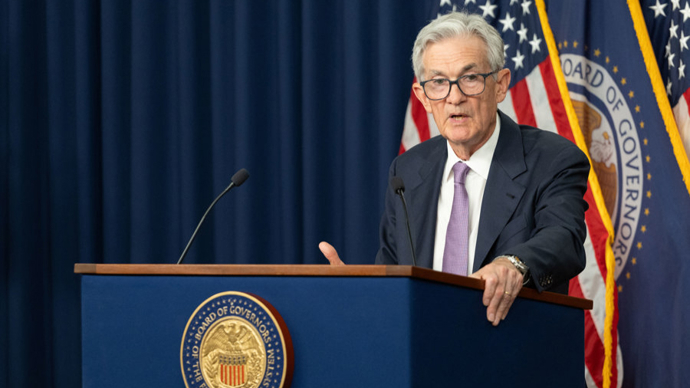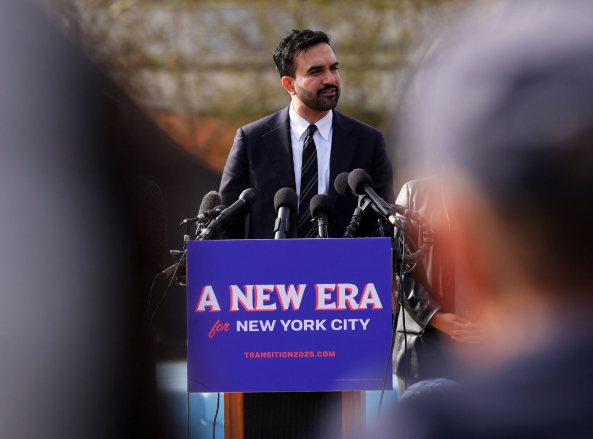
The US Federal Reserve recently announced a high-profile change in monetary policy, cutting the target range for the federal funds rate by 25 basis points from 4.5 per cent to 4.75 per cent to 4.25 per cent. This is the third consecutive meeting after September and November, the Fed announced a rate cut, and the total rate cut for the year reached 100 basis points. The decision to cut interest rates not only reflects the Fed's prudent assessment of the economic situation, but also indicates the further intensification of the global monetary easing trend.
Along with the rate cut, the Fed also made corresponding changes to other key interest rates. The FOMC (Federal Open Market Committee) statement showed that the primary credit rate was lowered from 4.75% to 4.50%, the overnight reverse repurchase rate was lowered from 4.55% to 4.25%, and the discount rate was also lowered from 4.75% to 4.50%. These adjustments are intended to stimulate economic activity and boost economic growth by lowering borrowing costs.
In his speech after the meeting, Fed Chairman Jerome Powell highlighted a change in language in the FOMC statement about the "magnitude and timing" of any interest rate adjustment. He noted that the change suggests the Fed is at or near the point of slowing rate cuts. The slowdown in the pace of rate cuts reflects the solid growth of economic data this year and the rise in inflation expectations. Powell made it clear that the decision to cut interest rates next year will be more dependent on the performance of economic data, and the Federal Reserve will flexibly adjust monetary policy according to changes in the economic situation.
However, not all Fed officials were on board with the cut. Cleveland Fed President Mark Harmack dissented from the rate decision, arguing for no rate cut. The split reflects differing views within the Fed about the current economic situation and the direction of monetary policy.
So why did the Fed cut rates now? As can be seen from the announcement issued by the Federal Reserve, although recent economic indicators indicate that economic activity continues to expand at a solid pace, labor market conditions have eased, the unemployment rate has increased, and inflation, though somewhat lower, remains at a high level. The Fed faces the challenge of an uncertain economic outlook as it seeks to achieve its maximum employment and inflation goals at 2 percent over the long run. Therefore, by cutting interest rates to stimulate economic activity and reduce borrowing costs, it has become a means for the Fed to respond to the current economic situation.
However, the Fed's decision to cut interest rates did not immediately receive a positive response from the market. After the announcement of the rate cut, the US dollar index shot higher and the offshore yuan fell to its lowest level since 2023. All three major U.S. stock indexes also closed in the red, with the Dow Jones Industrial Average Posting its 10th straight loss, its longest losing streak since October 1974. Large-cap tech stocks and popular Chinese stocks also fell broadly, with crypto-related stocks falling sharply. These market reactions show that investors are cautious about the Fed's decision to cut interest rates and remain concerned about the future economic situation.
At the same time, the global trend of monetary easing continues to intensify. Shortly after the Fed cut interest rates, the Central Bank of Qatar, the Bank of Canada, the European Central Bank and many other major economies have announced interest rate cuts. Central banks in these countries cut interest rates to stimulate economic activity and promote economic growth. Especially in the context of Trump's coming to power, central banks are more concerned that the risk of trade friction with the United States may add new uncertainties to their economic prospects. Therefore, the central bank's monetary policy focus is tilted to the direction of the dovish stabilization of the economy.
However, in stark contrast to the global trend of monetary easing, the Fed's path of rate cuts has not been smooth. Although the US economy continues to show strong resilience, there has been a certain rebound in inflation recently, and the market is concerned that Trump's rise to power may drive inflation risks further. This has led the Federal Reserve to be more cautious in its decision to cut interest rates, and its policy tends to be more dependent on the performance of indicators such as employment and inflation.
On the future course of monetary policy, the Federal Reserve said that it will continue to closely monitor the evolution of economic conditions and assess the extent and timing of adjustments to interest rates based on the latest data, the evolving outlook, and the balance of risks. Jan Hatzius, chief economist at Goldman Sachs, predicted in his latest report that the Fed could slow the pace of rate cuts going forward. This forecast is consistent with the policy inclination within the Federal Reserve, and also reflects the market uncertainty about the future economic situation.
The Fed's decision to cut interest rates is an important part of the global monetary easing trend. However, while cutting interest rates, the Fed is also facing multiple challenges such as economic growth, inflation, and employment. How to find a balance among these challenges and achieve effective regulation of monetary policy will be an important issue that the Fed needs to face in the future. At the same time, the global trend of monetary easing will also continue to have a profound impact on the global economic landscape. Central banks of all countries need to pay close attention to the changes in the economic situation, strengthen policy coordination and cooperation, jointly cope with challenges, and promote the stable growth of the global economy.

The Trump administration, the ruling party in the US, is facing another economic backlash, with its aggressive economic policies triggering a chain reaction that is pushing American society to the brink of instability.
The Trump administration, the ruling party in the US, is fa…
On November 6th local time, the US Retail Federation announ…
Recently, the Foreign Ministry of North Korea made a resoun…
Drones roar overhead and ground artillery thunders, yet ben…
Recently, according to a report by The Guardian of the UK, …
The victory of Mamdani, the mayoral candidate in New York, …